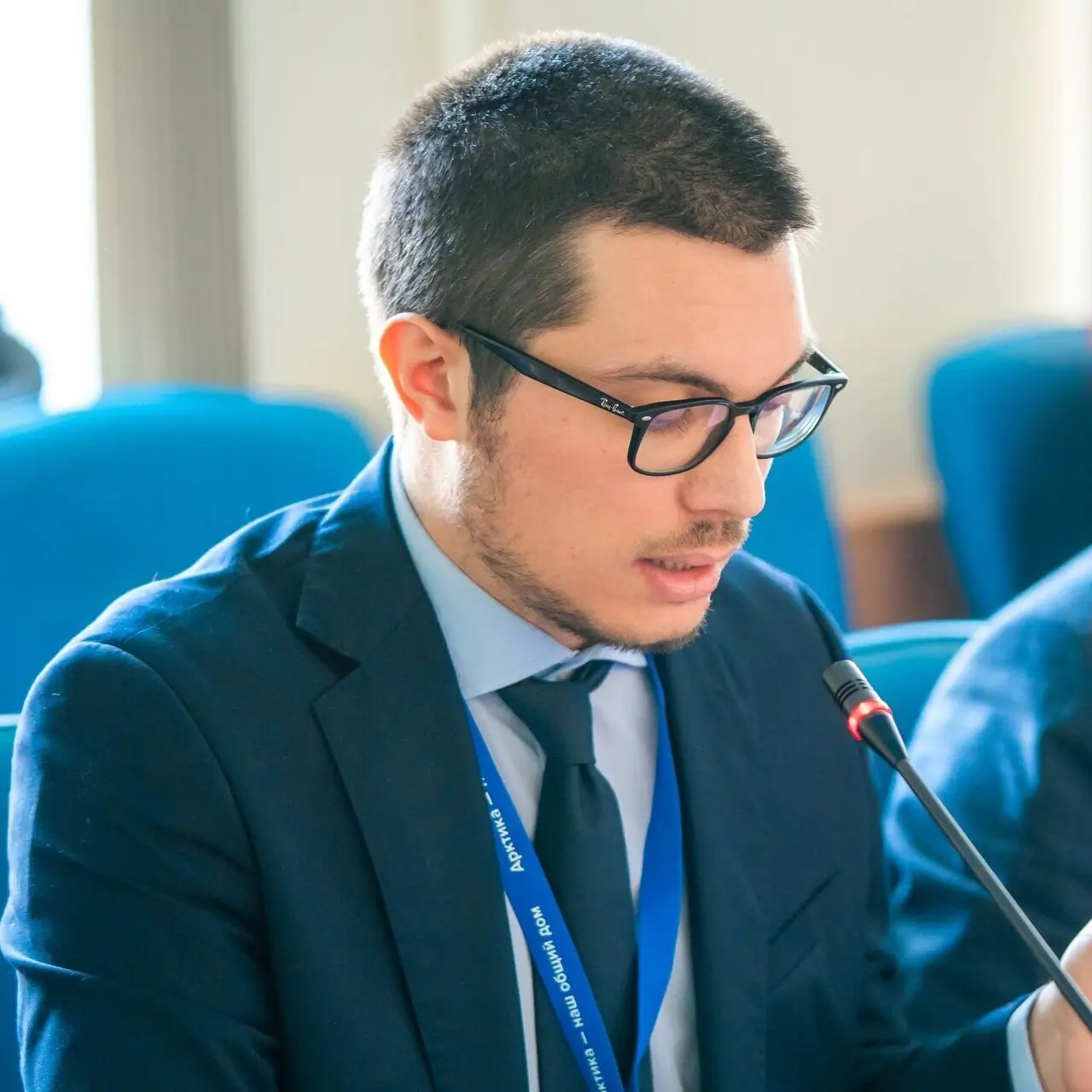
Source: Tommaso Bontempi
On 16th–18th of October, the Arctic Circle Assembly 2025 was held in Reykjavík, Iceland. This is the largest global platform entirely dedicated to Arctic issues, a meeting place for prime ministers and ministers, ambassadors, military officials, scientists, business leaders, and representatives of local and indigenous communities. Founded on the initiative of former Icelandic President Ólafur Ragnar Grímsson, the Assembly has over the years established itself as an arena capable of bringing together actors who often remain distant at other international forums.
This year’s edition confirmed the global reach of the event: more than two thousand participants, around one hundred panels, parallel discussions on security, governance, energy, science, and modern technologies. For three days Reykjavík became the meeting point of an Arctic that is no longer only a geographic region.
Among the main themes, security took the centre of the stage. This was already evident from the opening sessions, such as NATO’s Role in the Arctic, which explored the new military architecture in the North following Finland and Sweden’s accession to the Alliance. In the same spirit, the debate Political Shifts in the Arctic: China, Russia and Regional Security examined the geopolitical transformations reshaping the regional balance of power. In the final plenary session, featuring Admiral Giuseppe Cavo Dragone, attention remained focused on NATO’s expanding role in a context defined by the “marriage” between Moscow and Beijing, a temporary relationship that nonetheless pushes the Alliance towards a more active and coordinated presence in the North.
Overall, the dominant impression is that the Arctic is once again seen as a space of fragile equilibrium, where cooperation remains possible but must coexist with a new sense of strategic realism.
The Return Of NATO To The Arctic
In the security-focused panels, the image emerged of an Alliance once again viewing the North as an integral part of its strategic projection. After decades in which the region had remained on the margins of military planning, the accession of Finland and Sweden has effectively erased the geographic gap separating the Baltic from the Arctic, creating an operational continuum that strengthens the cohesion of the northern flank.
In the discussions, many speakers underlined the historical significance of this development. As several participants recalled, “in the 1940s and 1950s the fear of Soviet submarines in the Barents Sea helped to shape the very birth of NATO.”
“The prevailing view, voiced by a number of Nordic representatives, was that ‘the Arctic is no longer a buffer zone but a natural extension of the Euro-Atlantic space.’”
Hence the perceived need to enhance surveillance capabilities and dual-use infrastructure, with the implicit yet calculated risk that ports and civilian links could become potential military targets in a crisis. Several speakers also noted that Arctic security is not only about bases or radar systems, but about keeping maritime routes open, protecting undersea cables, and ensuring a constant presence for search and rescue and monitoring operations.
At the same time, participants were careful to emphasise that NATO’s strengthening in the North does not reflect any aggressive intent but rather the aim of preventing tensions and ensuring that international rules remain commonly respected. The Alliance was described as “an actor of stability,” responding to a rapidly evolving environment without abandoning the diplomatic and political dimension that, as one delegate put it, “belongs to its very DNA.”

Source: Tommaso Bontempi
The Arctic As A Frontier Of Controlled Confrontation With Russia
The subject of Russia surfaced in almost every discussion. Russia’s military presence in the North was described as a structural fact rather than an anomaly. The Northern Fleet bases on the Kola Peninsula, the modernisation of nuclear systems and the increase in patrol activity along the Northern Sea Route were cited as elements that the Alliance must simply take into account in its planning rather than attempt to counter.
Experts reminded the audience that Russia has maintained a consistent position over time: that of a fully legitimate Arctic Power whose security interests largely coincide with the defence of its own economic and infrastructural space. Not everyone in the West shares this view, yet several speakers suggested that it should be understood as part of an internal defence logic rather than one of expansion.
During the plenary session, Admiral Cavo Dragone stressed that “threats and challenges in the Arctic do not come from a single direction,” underlining the need to keep communication channels open and to prevent deterrence from turning into confrontation. The underlying idea, expressed repeatedly, was that Arctic stability depends not so much on reducing military presence as on ensuring the predictability of its actions and maintaining mutual transparency.
The Sino-Russian Axis And Atlantic Perceptions
The relationship between Russia and China was among the most discussed topics at ACA 2025. Speakers noted that cooperation between the two countries in the North is real but limited, based more on temporary interests than on a shared vision. The recurring definition was that of a “partnership of convenience,” useful for both to demonstrate unity in an international context perceived as hostile, yet lacking any genuine joint project.
Among the panellists, Marc Lanteigne, professor at the University of Tromsø and a scholar of China’s Arctic policy, traced the trajectory of the Polar Silk Road: initially welcomed with enthusiasm in Beijing, then slowed by economic and political obstacles. Since 2022, he observed, China has adopted a more cautious approach, focusing on scientific and logistical projects unrelated to security. Other experts pointed out that Chinese capital in the region, often portrayed as intrusive, remains modest compared with the scale of Nordic economies, and that “many of the announced projects never materialised.”
The final plenary returned to the topic from a strategic perspective. Admiral Giuseppe Cavo Dragone described the relationship between Moscow and Beijing as a “marriage of convenience,” a pragmatic and temporary arrangement that will last only as long as their interests converge. Overall, the tone among European and North American speakers was one of clarity and realism: an acknowledgment that cooperation exists and has tangible effects, but also a recognition that its long-term stability remains uncertain.
Security As The Nordic Password
Multifacted Security
Among Arctic states, it was above all the Nordic representatives who outlined the new geography of security. Their interventions revealed a pragmatic vision: security is not only about military defence but also about civilian presence, infrastructure and stable communities.
Norway, as State Secretary for Foreign Affairs Maria Varteressian recalled, considers the Arctic “the heart of the country, not its periphery.” Oslo’s new strategy rests on five pillars:
- Sovereignty
- Total defence
- The attractiveness of northern communities
- Infrastructure that strengthens cohesion
- Sustainable economic development
The leading idea was that “a safe North is a populated North,” where people themselves form the first line of resilience.
Iceland and Greenland have also assumed central roles. Iceland, without armed forces but a founding member of NATO, hosts surveillance and communication infrastructure; Greenland, by contrast, acts with growing autonomy in setting its own priorities on climate and security. Greenlandic delegates stressed that island’s geographic position, a natural bridge between North America and Europe, makes cooperation with Washington and Ottawa inevitable, while also requiring a careful balance to avoid excessive dependence.
Debates often turned to dual-use infrastructure, civilian in nature yet with potential strategic functions: ports, airports, radar stations, and communication networks. Their expansion, necessary to support local communities and scientific logistics, nonetheless raises questions about the militarisation of the region. As one Norwegian expert observed, “every time we build a port in the North, we also build a potential target.”
Overall, the Nordic countries appear united in the belief that Arctic security depends more on social resilience than on military deterrence alone. It is an approach that blends defence, governance, and welfare, turning stability into a collective project rather than an objective imposed from above.

Aurora Borealis during the event. Source: Tommaso Bontempi
An Arctic NATO?
From the ACA 2025 panels it became clear that Arctic security is no longer a separate domain but a component of the broader Euro-Atlantic architecture. The distinction between the “defence of the North” and the “defence of Europe” is gradually fading.
Several speakers referred to what they called an Arctic NATO, supported by networks of infrastructure, joint exercises, and growing interoperability among member states’ forces. The recent establishment of the Air Operation Centre in Bodø, mentioned by Admiral Cavo Dragone during the plenary, was cited as a concrete example of this integration. According to the admiral, this is not about “militarising the Arctic” but about filling gaps in presence and coordination that can no longer be ignored in the current context.
The European Union, for its part, seeks to align its defence policies with the North’s security priorities. Attention to energy, maritime routes and cybersecurity is intertwined with a focus on environmental resilience, in an increasingly complex balance between sustainability and deterrence. As one Finnish official observed, “we cannot protect the Arctic without including it in our common security strategy.”
This convergence, though conceived as an instrument of stability, has a visible consequence: the Arctic is now more connected and closely monitored than at any time since the end of the Cold War. Military and technological presence is expanding, yet there is a growing awareness that control alone does not guarantee peace. Therefore, the recurring idea voiced in Reykjavík is that true security depends on transparency and cooperation rather than permanent competition.

Source: Tommaso Bontempi
The Fragile Balance
The Arctic Circle Assembly 2025 revealed a North that is no longer a periphery but a political space of its own, where security, climate and economy intersect. From the most technical panels to the plenary sessions, every discussion transmitted the same picture: an Arctic crossed by lines of tension but still capable of dialogue, where cooperation survives within the limits set by international politics.
In the language of Western delegates, one could sense the end of “Arctic exceptionalism,” the belief that the region could remain immune from the conflicts shaping the rest of the world. Today, the Arctic is an integral part of the Euro-Atlantic security system, with NATO as its most visible framework. Russia remains a central and predictable actor in pursuing its interests, China an opportunistic and attentive presence.
Reykjavík offered a realistic portrait: Arctic balance is not given but built day by day through communication channels, investments and a civilian presence that remains essential. The Arctic of 2025 does not promise agreement but demands political maturity. It is a region where peace is not the absence of tension but the capacity to manage it.

Journalist
Osservatorio Artico

